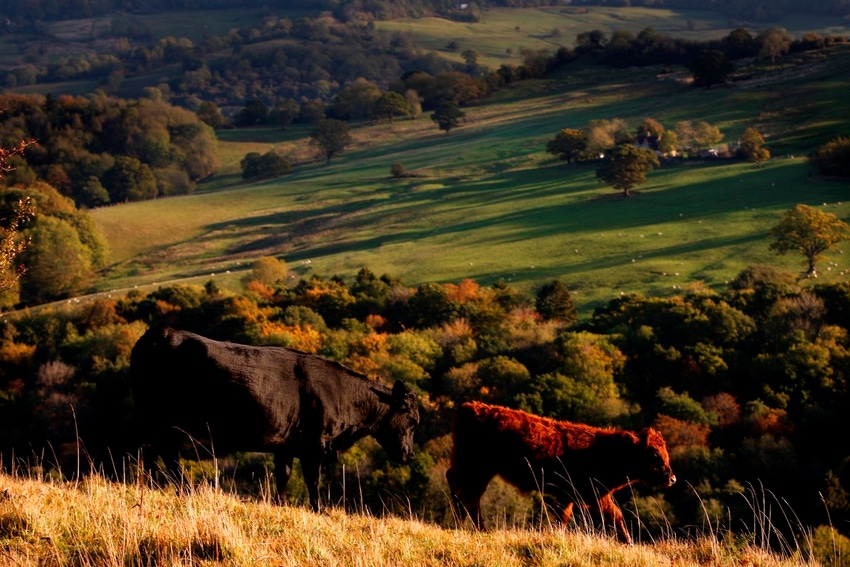May 22, 2017

Well known for their happy dispositions, California cows are expected to be tested soon for their ability - or sheer inner satisfaction - for climbing hills. Some have it yet most don’t.
Researchers and cattle producers want to know what drives some cattle to higher ground when given a choice. If the element can be found and isolated it may be bred into many range herds to encourage them to head for the hills.
We’re not talking confined dairy cattle here, but the five million beef bovines that inhabit the state’s 38 million acres of rangelands at various elevations. Most of the cows tend to enjoy grazing in pastures near creeks and streams at lower elevations.
A few, when given a choice, will head for the hills, apparently with delight. These are the animals researchers want to study.
It is an economical and practical benefit to cattle owners and for the environment for their stock to be spread both up and down hilly ranges. Too much grazing at lower levels wears out pastures, strains creeks and water supplies, accumulates manure and urine, and complicates calving while higher acreages often remain lush with free-flowing streams.
Leading a team of researchers to study hill-climbing cows is Juan Medrano, animal science professor at the University of California, Davis (UC).
Derek Bailey, New Mexico State University range science professor, and a colleague of Medrano’s, told him a lifetime of watching cattle has convinced him that some cows when released in a grazing area will head for the hills, “like they didn’t know they weren’t elk. They could be belly-deep in green grass, and just bolt for the hills,” he said.
Medrano, Bailey, and Colorado State University animal genetics specialist Milton Thomas are close to developing a genetic test to determine if a bull is likely to sire daughters who like to climb hills. A preliminary report on their project appeared in spring-summer issue of Outlook Magazine, published by UC’s College of Agricultural and Environmental Sciences.
The researchers have measured the slope use, elevation gain, and distance traveled from water by putting ‘GPS’ collars on 180 cows on seven ranches in three western states. They took measurements every 10 minutes for months at a time. Blood samples analyzed for chromosomal commonalities found an overlap in genes linked to locomotion, motivation, and spatial learning.
At one point they thought they saw a correlation between the hill climbers’ characteristics and meanness. The report doesn’t specify how they dealt with that issue, but it was eventually discounted.
Tempers don’t necessarily rise with elevation. The team has concluded that hill-climbing behavior does not correlate with any undesired traits.
“Some cows just prefer to climb more than other cows,” Bailey said. “If breeding can move the bell curve in that direction, management tools like fencing and herding will be much more effective.”
Clayton Koopmann, a ranger and rangeland management consultant who runs cattle on hilly ground in the San Francisco Bay Area, sees a number of ecological and economic benefits to breeding for “cows who like to travel.” They help to consume forage more evenly, and he says, “That’s good for livestock production and for the environment.”
Next could be a search for cowboys who thrive on the rarefied air of higher pastures, or even high tech saddles that include oxygen masks that pop up in case of an emergency. And, of course, measurements will be required to determine how much farther lariats carry at altitudes and whether high-pitched “yahoos” travel further in thinner air.
About the Author(s)
You May Also Like




